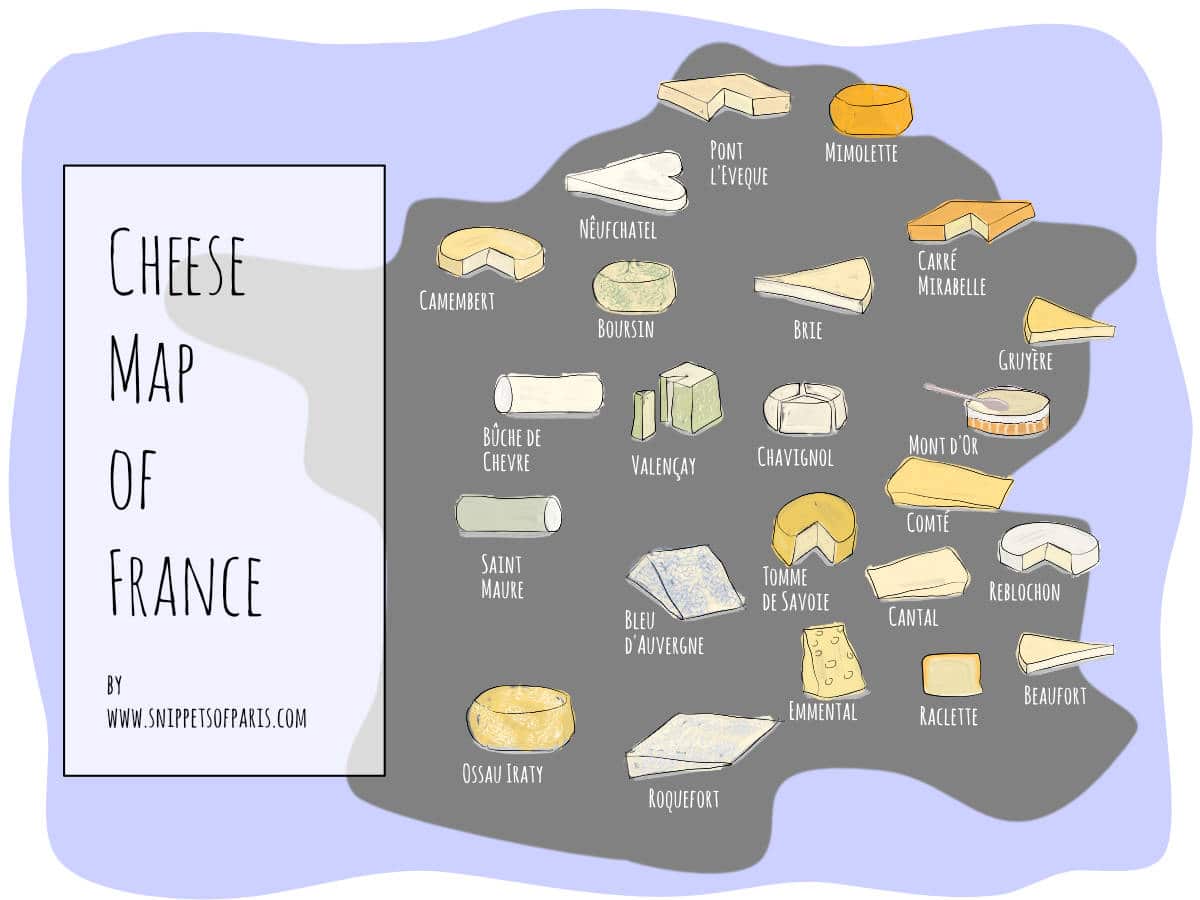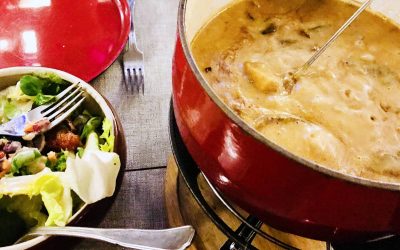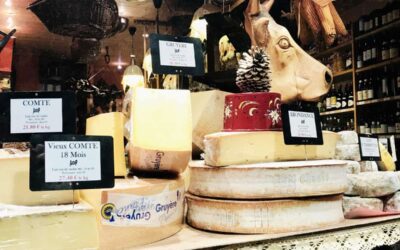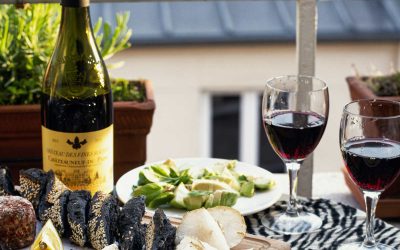There are over 1600 types of French cheeses, but never fear, we are not going to cover them all. I’m sure none of us want to read a 20-volume encyclopedia on cheese.
So to pick the cream of the crop (pun intended!), I’m going to focus on the classic French cheeses that are more popular than others, and widely available.
Exported around the world, you should easily be able to find these at finer grocery stores in your neighborhood for a cheese tasting or a wine and cheese pairing. After all, what good is this list if you can’t taste for yourself!
When you are looking for the cheeses, stay away from the industrial versions. If possible, look for cheeses that have the following letters on their packaging:
- AOC – Appellations d’origine contrôlée
- AOP – Appellations d’origine protégée
- IGP – Indication géographique protégée
These are designations given by the French government to milk and cheese producers from the originating area, who are following established standards of quality and production. In other words, this is the authentic stuff.
I. Soft & Creamy Cheeses
Soft or unpressed cheeses usually have a white rind with a creamy yellow interior. The rind is meant to be eaten (more on cheese etiquette here) and you can serve this cheese as is, or warm as a sort of a dip to scoop up with a piece of bread.
1. Brie
Brie may be a French-sounding girl’s name, but here it is actually a cheese. Originating in the Brie region (today we know it as the east Parisian suburb of Seine-et-Marne), this soft cheese is quite rich and creamy.
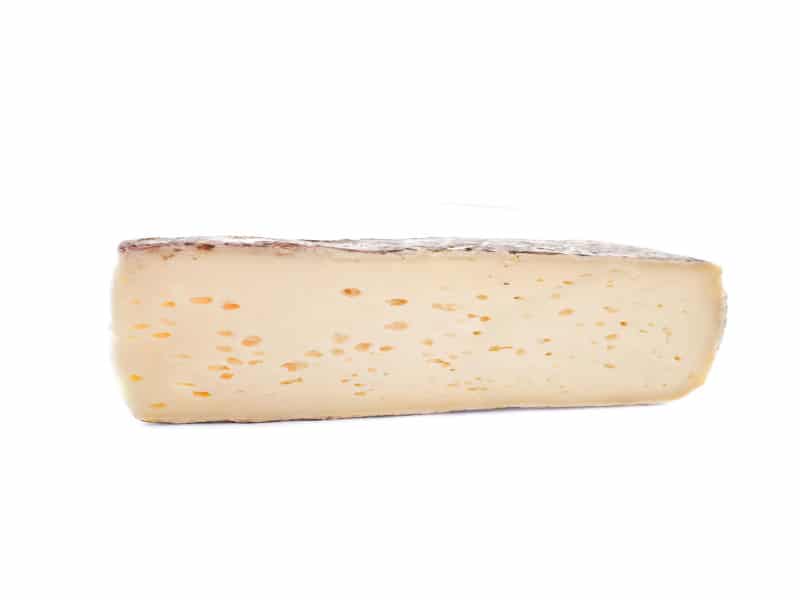
There are 3 types of Brie cheese: Brie de Meaux, Brie de Melun, and Brie de Provins, named after those towns in the area. (If you are wondering, the texture of Brie de Melun is a bit firmer, but they do all taste similar.)
Made from raw cow’s milk, the cheese was declared to be the “King of cheeses” in 1815 by French politician, Talleyrand. For recipe ideas, check out the Brie Fondant au pesto and Brie en croute.
Buy Brie de France here.
2. Camembert de Normandie
As you may have guessed, this cheese is from Normandy, and specifically the village of Camembert, around the 18th century. (Nobody said that French cheese-namers were very original.)
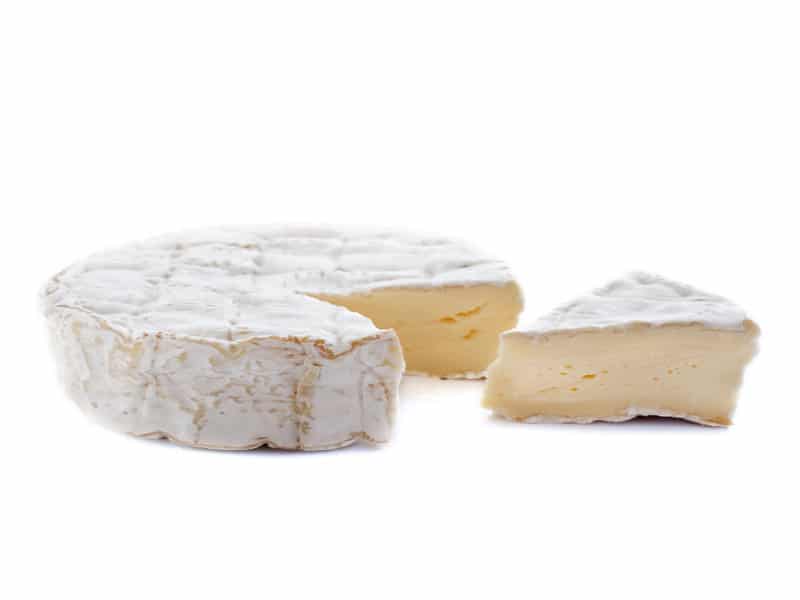
One of the most famous French cheeses, Camembert became widely known during World War II, when it was included in the soldier rations.
Fun fact: In French offices, the pie chart graph is sometimes called “a camembert”.
Camembert cheese is usually sold in a wooden box, and has a whiteish rind, with a light yellow interior. The taste becomes stronger once the package is opened, so be sure to eat it quickly. For recipe ideas, check out the Baked camembert.
Buy Camembert de Normandie here.
3. Mont d’Or
From the Jura Mountain in France, Mont d’Or literally means “Mountain of Gold”. There are two officially recognized cheeses sold under the Mont d’Or (or Vacherin Mont d’Or) AOC label. One from France, and the other from the Swiss Canton of Vaud.

The French version uses raw milk, while the Swiss version uses a subpasturization process to reduce spoilage. Both versions taste similar, with the French version being a little bit more runny.
Buy Mont D’Or here.
4. Pont-l’Eveque
Another soft cheese is the Pont-l’Eveque in Calvados, from the town of the same name. It is an uncooked and unpressed cheese, and has a slightly pungent smell.
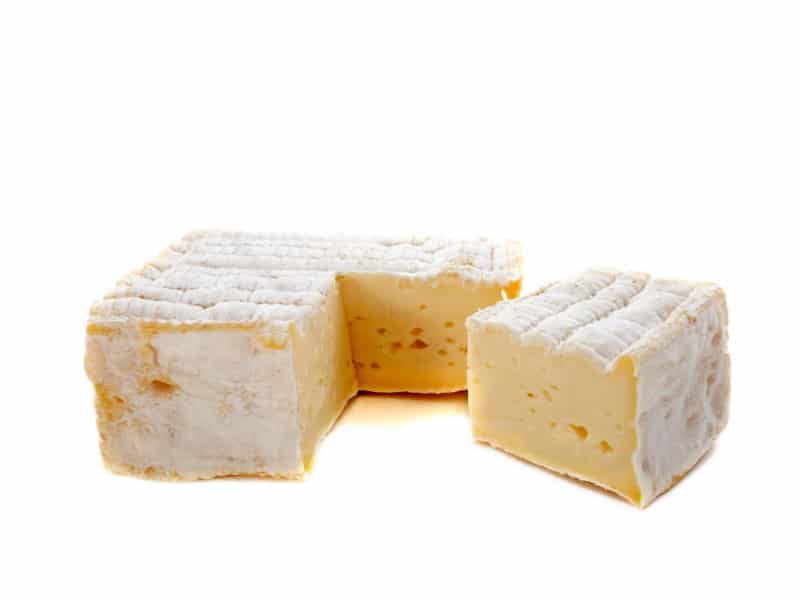
It is the oldest of the Norman cheeses, dating back to the 12th century. It is considered Norman even though the region today is called Calvados, since this area was controlled by the Normans at the time. (If you’re English, you will remember your history with that most famous Norman, William the Conqueror, aka Guillaume le Conquérant.)
Buy Pont-l’Eveque here.
5. Nêufchatel
Nêufchatel is a slightly crumbly cheese made in the Neufchâtel-en-Bray, Normandy. It is believed to date back to the 6th century.
There is an American Nêufchatel as well, which has cream added to it. This version is even softer and has lower fat content, and so is sometimes sold as cream cheese spread.
P.S. if you are planning a romantic picnic for two, add this to your picnic basket, as the French version of the cheese comes in the shape of a heart.
Buy Nêufchatel cheese here.
II. Semi-Soft French Cheeses
Semi-soft cheeses are usually pressed, but not heated during the pressing process, and so retain more water.
1. Reblochon
Reblochon is a traditional cheese from the alpine region of Savoy, which is said to date back to the 14th century. It was not allowed into the United States until 2004, because it did not pass U.S. pasturization standards.
The cheese from Savoy really took off when local chefs decided to take the classic gratin dauphinois recipe and add reblochon to it. This rebranding of the cheese into a new French winter dish called the tartiflette, introduced it to skiers coming into the area every winter and made it popular all across France.
☞ READ MORE: French Comfort Food: 9 Hearty Recipes you will love
2. Tomme de Savoie
With a lower fat content and milder taste, Tomme de Savoie is another semi-hard cheese from the Alps region.
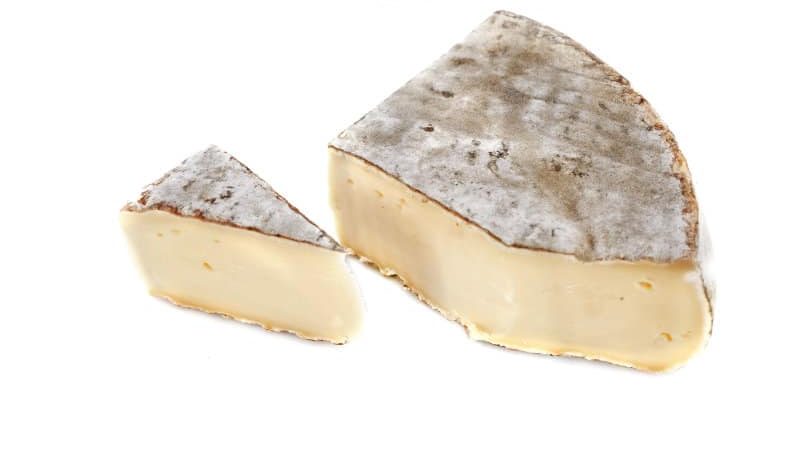
The cheese is made from skim milk as a leftover, and so started off as a peasant cheese. Today it is popular for its low caloric content and light taste.
Buy Tomme de Savoie here.
3. Carré Mirabelle
From the Lorraine region of France, this semi-hard cheese is said to have been produced by the Benedictine monks of the Abbaye de Vergaville in the 10th century.
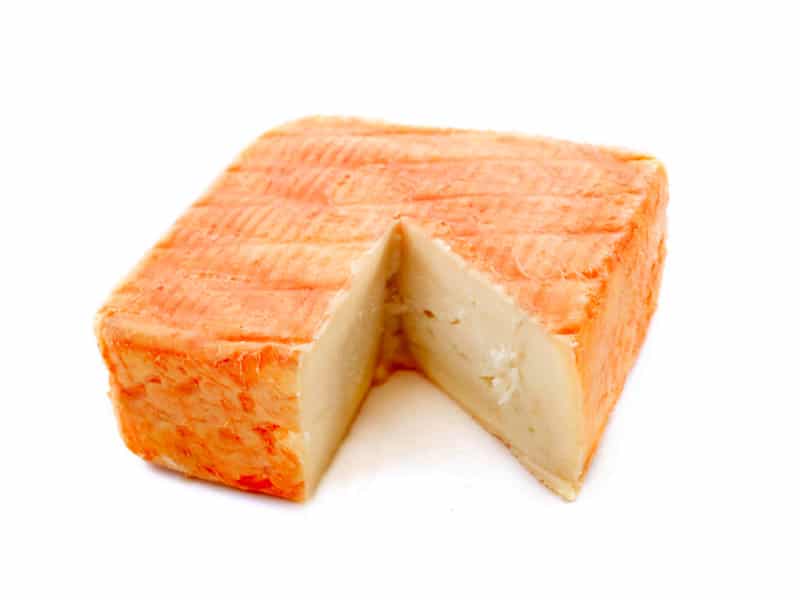
It has a distinct square shape and is washed with a digestif called l’eau de vie de mirabelle during its maturation process. This gives it a very recognizable and smooth taste.
4. Ossau-Iraty
Produced in Basque country near the French-Spanish border, ossau-iraty is made of sheep’s milk. It is named after the mountain Midi d’Ossau and surrounding Forêt d’Iraty, where the sheep graze.
It is the only sheep’s milk cheese to be protected with the AOC, along with the more famous roquefort. The cheese has a light and nutty flavor.
Buy Ossau-Iraty here.
III. Classic Hard Cheeses
Hard cheeses are also called “pressed cheeses” because they are pressed to squeeze out excess liquid. These cheeses last longer in general, making them, which was very important in the days before refrigeration.
1. Comté
A classic hard cheese, the comté is usually a staple on a French cheese board. From the region of Franche-Comté on the border with Switzerland, this AOC-protected cheese is one of the most produced in France.
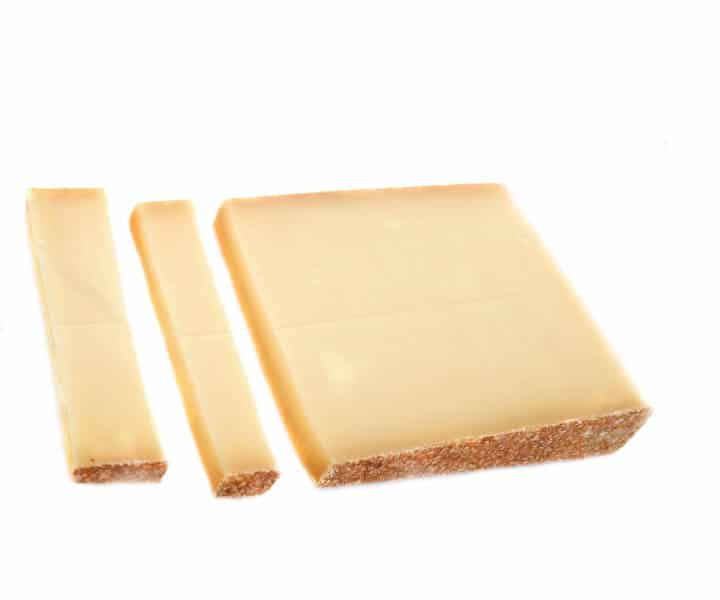
Hard dry cheeses like the comté date back to Roman times, when it was necessary to have hard flat cheeses that didn’t take up much storage and were easy to transport.
Buy Comté cheese here.
2. Cantal
Cantal is also quite an old cheese, this time from the Auvergne region on the border with Italy and Switzerland. The area has been making cheese since the Celtic Gauls and Romans lived in the area.
It tastes somewhat similar to cheddar, and is sold as “jeune” (young), “entre deux” (between two), and “vieux” (old). The older or more mature the cantal is, the stronger the taste.
3. Emmental
Now this one is a bit of a tricky one because if you are looking for good emmental, because this is the basic “cheddar” of French cheese. It doesn’t taste anything like cheddar, it is just that most of the versions that you find in the supermarket are the ones made industrially.
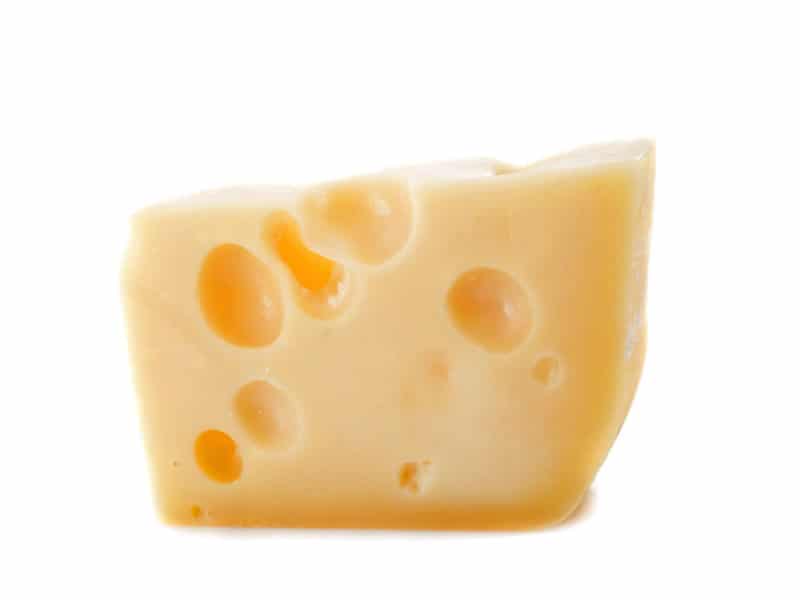
So to get a high-quality emmental you are going to have to look for the IGP appellation. It looks and tastes like a milder Swiss cheese and is often found in classic French recipes like croque monsieur or madame, and the quiche lorraine. There is also a version from Brittany called Paysan Breton Emmental.
Buy Emmental cheese here.
4. Gruyère
There are 2 types of gruyère, the Swiss one and the French one from the Jura area around Burgundy and the Alps. It is creamy and slightly nutty in taste, and is a very popular cheese that is often used in cooking recipes, such as the French onion soup.
Buy Gruyère cheese here.
5. Beaufort
Beaufort is part of the gruyère family, although it also has a slightly stronger taste. It is also from the Savoy region, from the area around the town of Beaufort.
Buy Beaufort cheese here.
6. Mimolette
From Lille in the north of France (on border with Belgium) comes the mimolette.
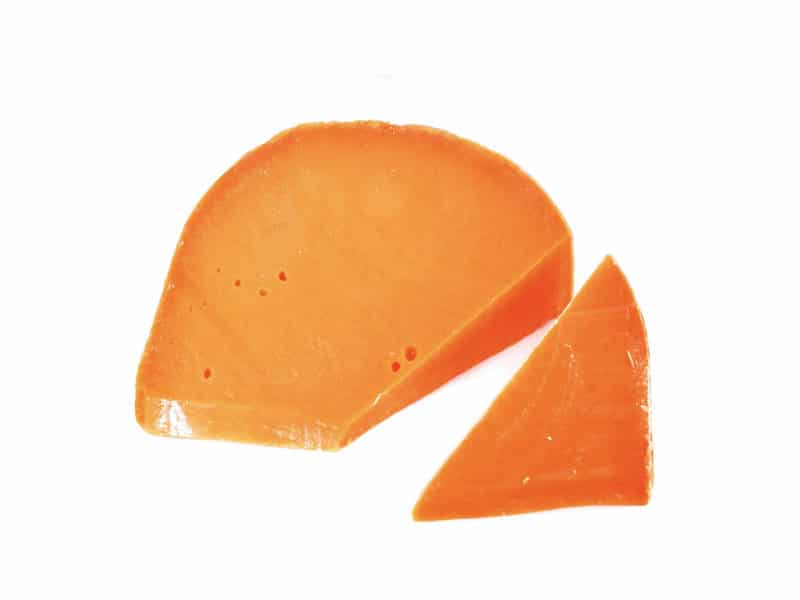
It has a very distinct orange color, and tastes a bit like Parmesan. It also can be sold at various points in the maturing process, and the taste gets sharper as it ages.
Buy Mimolette here.
IV. Strong Blue Cheeses
There are two options for cheese that has mold growing on it: it has either gone bad, or it has turned into a different type of delicacy called blue cheese. (Marketing matters!)
1. Roquefort
Roquefort from the region of Occitanie in the South of France, the area around Montpellier and Carcassone. It is made from sheep’s milk (not cow), and has a crumbly texture and is quite salty.
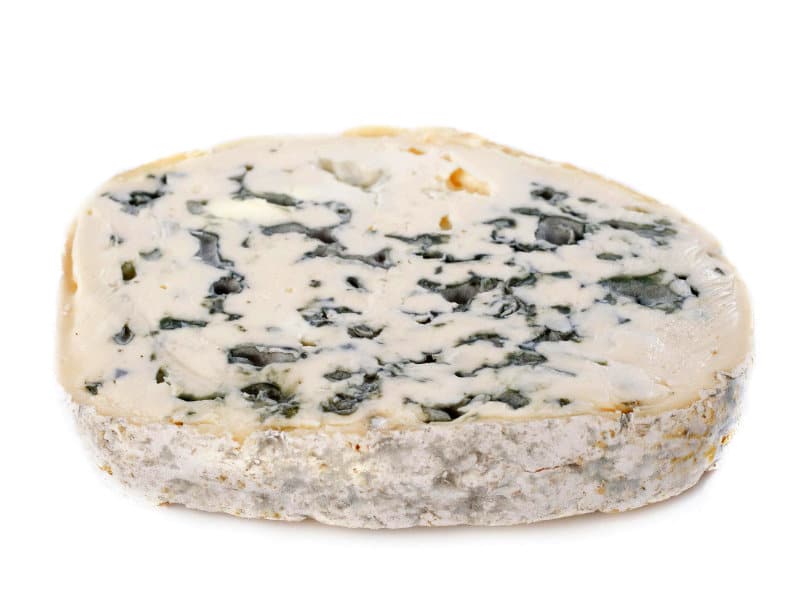
The cheese dates back to the days of antiquity, centuries before the birth of Christ. Legend has it that a lusty shepherd left his cheese and bread in a cave while pursing a pretty girl. When he came back, he found his cheese with mold all over it.
Buy Roquefort cheese here.
2. Bleu d’Auvergne
From the region of Auvergne in the center of France around Lyon, comes the bleu d’Auvergne.
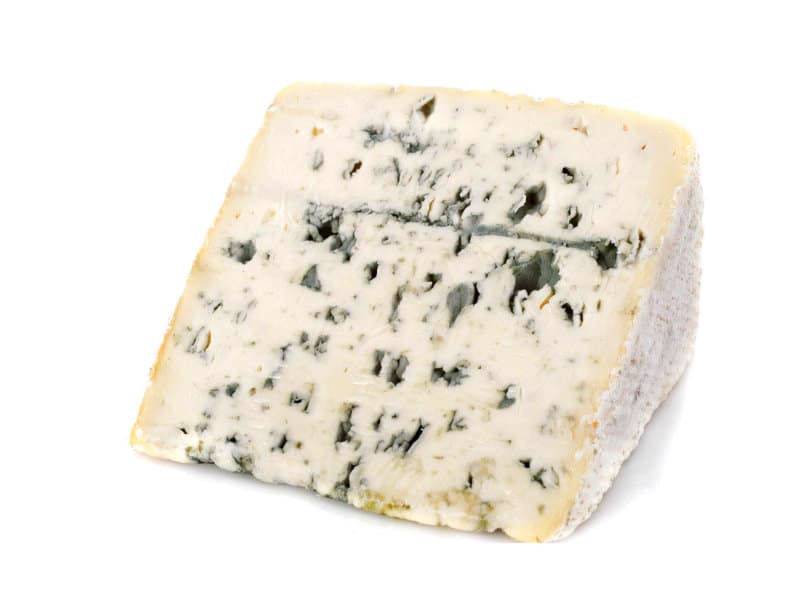
It is made from cow’s milk and is a bit less salty in taste than the roquefort, and as well as more creamy. It is often used in salad dressings like blue cheese dressings.
Buy Bleu d’Auvergne here.
V. Classic Goat Cheeses
While most of the other cheeses on this list are made from cow’s milk, goat cheeses deserve their own category.
1. Bûche de chèvre
Originating from the Poitou-Charentes area near the Loire Valley, the bûche de chèvre is today produced all over France.
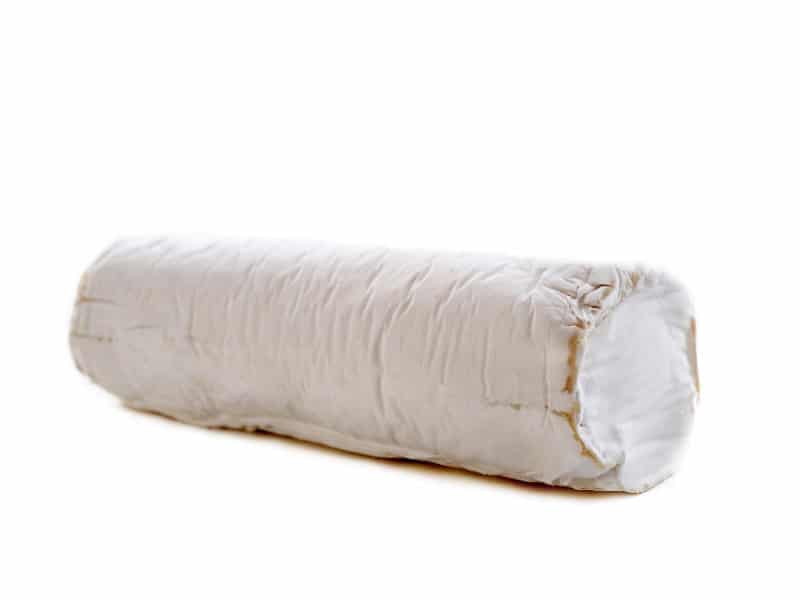
Sometimes called bûcheron, it has a soft white rind, and creamy white interior, and is great for adding into salads, etc.
Buy a bûcheron here.
2. Saint Maure
From nearby Sainte-Maure-de-Touraine in the Loire Valley, comes the Saint Maure goat cheese. It is a very old cheese, believed to date back to the 8th century Bataille de Poitiers.
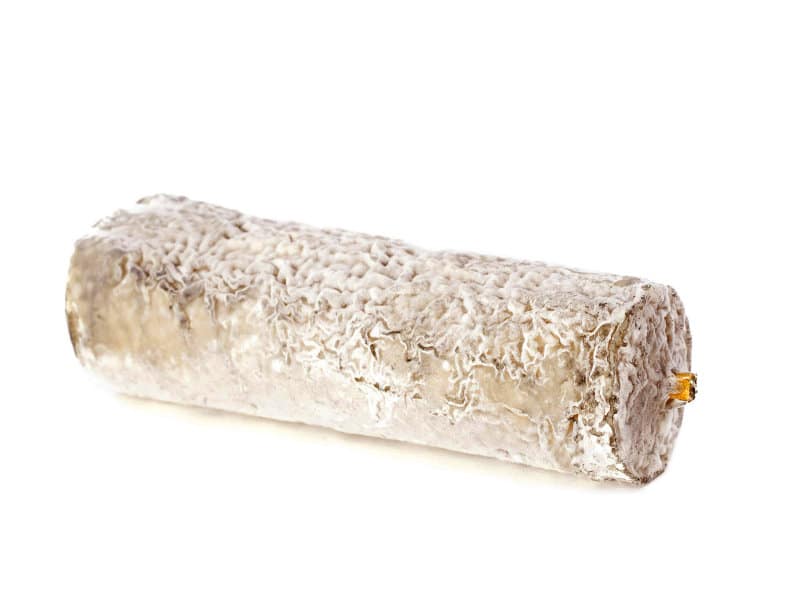
Legend has it that Ottoman women, who were left behind after the battle, taught the locals how to make the cheese based on the bacterial fermentation and the decomposition of plants in black manure.
It is usually aged at least 10 days and has a soft grey rind with a white interior.
Buy Saint Maure here.
3. Crottin de Chavignol
Another famous cheese from the Loire valley is the Crottin de Chavignol, from the town of Chavignol which has a mere 200 residents. (Another alternative is the goat cheese from Rocamadour.)
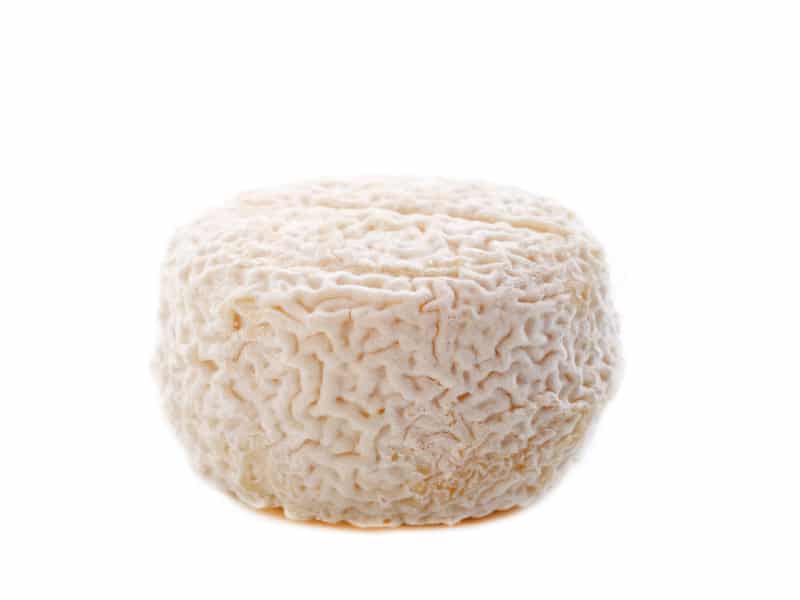
The word “crot” is usually used for dung, but don’t be fooled, this cheese tends to be rather expensive per gram, since it is sold in such small quantities. It can be sold as Chavignol jeune (young), or Chavignol bleuté (mid-maturity), or Chavignol affiné (full maturity).
Buy Crottin de Chavignol here.
4. Valençay
With its distinctive pyramid shape, you can easily recognize the valençay from a distance. Named after the town of Valençay in the Loire Valley, this goat cheese is usually aged around 3 weeks.

According to folks’ tales, it has a pyramid shape with the tip cut off, because Napoleon Bonaparte stopped by the town after his defeat in Egypt and was so irritated by the sight of a pyramid, he chopped off the top with a sword.
Buy Valençay cheese here.
VI. Fresh cheeses
Cheeses that do not undergo an aging in a cave are considered “fresh cheeses”.
1. Fromage blanc
Fromage blanc (“white cheese”) is a creamy soft cheese that is a lot like low fat cream cheese.
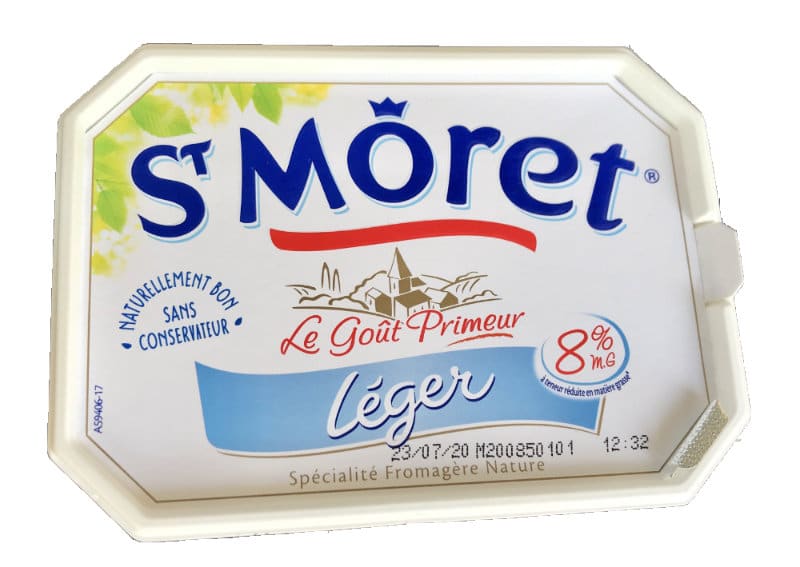
It is basically the French equivalent of Philadelphia Cream Cheese, used to tartine (spread) a baguette for breakfast or as a snack.
2. Fromage frais
Fromage frais (“fresh cheese”) is a bit more like yogurt although it does not contain live cultures when sold, whereas with fromage blanc the fermentation has been halted.
Fromage frais is usually used in desserts and after-school snacks, such as whipped creamy fromage frais topped with fruit.
3. Boursin
Boursin is not really a type of cheese, as much as it is a brand. But since it has its own taste as a type of herbed fromage frais, I decided to include it on the list.
From Gournay-en-Bray in Normandy, this fresh cheese is infused with garlic and herbs and is also used as a spread on bread.
Buy Boursin here.
VII. Other French Cheeses
1. Raclette de Savoie
Raclette is a semi-hard cheese from the Savoy region that is usually only eaten in winter (amongst Parisians atleast). The Savoy region ranges across the French alps and medieval texts date the cheese back to at least the 13th century.

Today raclette is typically served after a long day on the ski slopes and/or as an easy dinner party with friends and family. It is usually served warm and melted over potatoes and charcuterie, with a side of salad and pickles. You can get the full raclette recipe here.
Buy Raclette cheese here.
2. Fondue Savoyarde
Another winter favorite is the fondue. Fondue meaning “melted” is not a type of cheese, but rather a melted cheesy mixture including several types of cheese and a touch of wine and liquor.
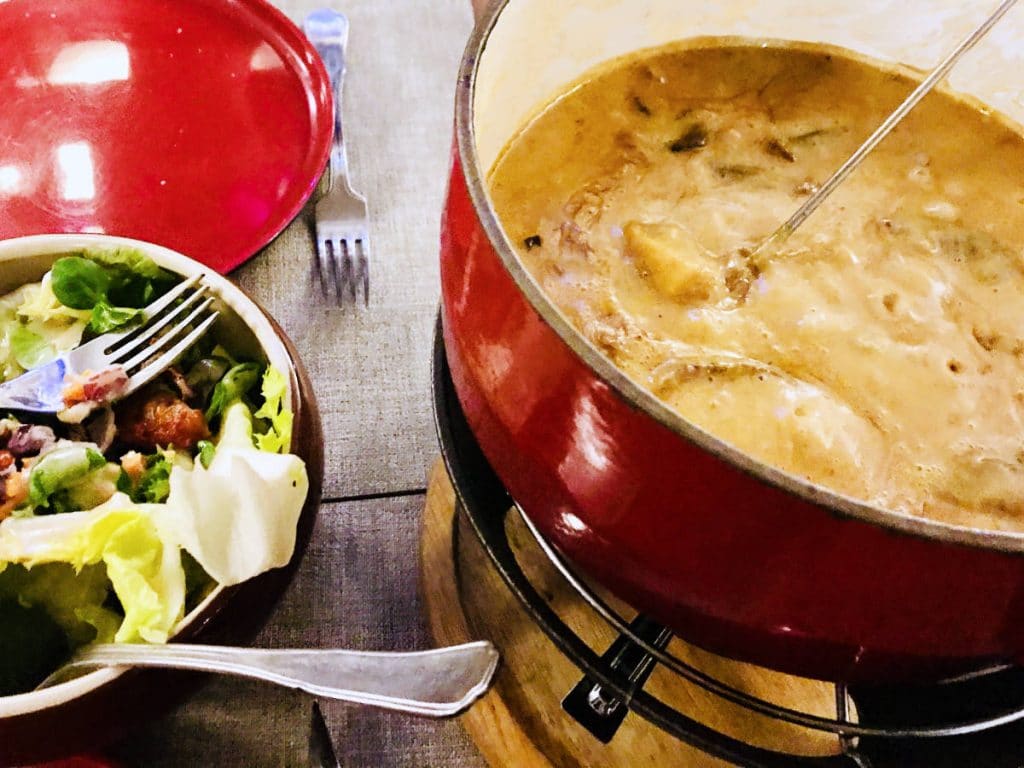
The fondue in France is usually the Fondue Savoyarde, which contains local cheeses such as the Beaufort, Comté and the ubiquitous emmental. Fondues that you may be served in Switzerland or Italy will include local cheeses from those countries.
A cheese fondue is usually served with pieces of baguette and salad. And of course, wine 😉 You can get the full cheese fondue recipe here, along with its variations.
Buy fondue cheese pack here.
VIII. French Wine and Cheese
If you are wondering how to pair these classic French cheeses with wine, have no fear, it is very hard to go wrong here. If you avoid rosés and sweet wines, most red and white French wines actually pair quite well with any sort of cheese.
Red wines like Burgundy and Bordeaux go well with most cheeses. For a strong blue cheese, choose a light-bodied red wine like the Beaujolais. Dry white wines like the Reisling from Alsace also go really well with cheese, as do the sparkling crémants from the Loire Valley.
You can try to keep regional cheeses and wines together like the Saint-Maure goat cheeses with Loire Valley wines, or reblochon from Savoy with Vin de Savoie. You can read more about composing a French cheese plate here.
☞ READ MORE: ABC of French Cuisine (the Food Dictionary)

Well, that was a lot cheese! And it is not done yet, this is France so of course we have a full etiquette guide on how to eat cheese. It includes everything from how to cut different types of cheese, when to eat cheese, and more. A bientôt and happy eating!
